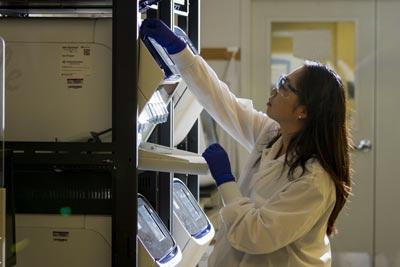Throughout the semester, I was able to push myself to write at a higher level than usual. Because of COVID, I lost a lot of practice and was challenged in my writing skills despite only being in high school for two years. The first semester of college is generally about trial and error, with the goal of doing your best in all aspects. My expectations for myself were a little higher than what I have achieved, but I am still very happy. English class was never my favorite class, but I knew I always wanted to be a great writer. I enjoyed writing class in college far more than any other class I’ve taken because it was both entertaining and flexible with the topics we learned. I became more aware of the bad habits I used to have during essays, such as losing track of the topic and figuring out how to keep entertaining content going. I was able to reinvent my perception of writing during phases 1-3. Not only that, but I knew to approach my assignments in steps and to understand that everything is an evolving process.
Phase 1 was a fairly simple assignment, but I did struggle to find a specific moment in my life to discuss. This assignment made me think about my life and upbringing until I realized the answer was right in front of me all along: my journals. This assignment allowed me to express how language influenced my confidence and communication skills. Phase 1 assisted me in discovering aspects of myself and appreciating the experiences throughout my childhood. I had no idea how close I was to writing until this assignment; it was a release for me as a child. It was very sweet to remember my pink diary with black butterflies on it, and how writing is still such an important part of my personal life. Throughout my essay, I was very focused on my flow and liveliness. I never, and I mean never, want my readers to be bored while they read my work. I enjoy writing with a personal touch. “Recognize the role of language in empowering, oppressing, and hierarchizing languages and their users, and be open to communicating across different languages and cultures,” was the learning outcome that most resonated with me in phase 1. The workshops in this phase taught me a lot about my classmates’ experiences with language and how it affects people’s lives far different from mine. For example, a classmate of mine discussed how they had to learn the English language at the age of seven, which was a difficult journey that had a tremendous impact on their life. The first phase was an excellent introduction/warm-up to English and writing. It was a lot of fun. It was a pleasant way to reconnect with myself and set the tone for future assignments.
In phase 2, I chose the Amy Tan excerpt “Mother Tongue” to analyze two rhetorical features: metaphors and anecdotes. I wrote rhetorical essays in high school, but never really understood them. What helped me really understand the core of rhetorical analysis was the assignment expectations/prompt. The most important realization I’ve had throughout this phase is the importance of using pathos, logos, and ethos correctly. When I was analyzing Tan’s text, I realized how easy it is to connect to because she prioritized the right appeal in relation to her topic. Inducing pathos when explaining hardships such as injustice and discrimination will help readers feel what the author is explaining. In phase 2, the learning outcome that most resonated with me was “recognize and practice key rhetorical terms and strategies when engaged in writing situations.” Her use of logos had a strong impact because of her personal anecdotes; it felt as if we were living her experiences alongside her. This emotion brings us back to her point about different types of language and how they should be acceptable without labeling people as inferior. Finding joy or meaning in the act and practice of writing is a learning outcome that this phase assignment also assisted me in achieving. This assignment was enjoyable for me because it was interesting to analyze Tan’s text and understand why she chose the writing style she did. It was fascinating to dissect her writing and investigate why she might have shared a particular story or why she used a particular word.
This was a slightly more difficult assignment for me during phase 3. I was nervous because this was my first real experience with a research assignment. I was concerned about writing a research paper. However, as we worked in class, breaking down sections of the essay and working on them one at a time, it all seemed much easier. I believe I was concerned because I am a biology major. So I know I’ll have to do a lot of these in the future, and it brought me very close to it. It was also extremely exhilarating. I was excited to learn and teach about a relatively new scientific topic, genomics. I was excited to learn and teach about a new science topic, genomics. The most important thing I’ve learned from this phase is that it’s not as scary when you first start. When we were told to review phase 3, I kept overthinking about it because I knew I wanted to do well on this paper and in this class, and I didn’t know how to approach it. But, to be honest, most of that goes away when you first begin. Looking at something difficult from afar only makes it appear more difficult; being in the process means it is feasible. Overall, I had a great time with this assignment. I saw my future and enjoyed the challenge that came with it. I now look forward to more search essays because I know I can do them because of this class. Although it was rigorous, this was my favorite phase.
That being said, there are a few things I still need to work on to improve my writing. I made a few mistakes, but I tried my hardest to complete many of the course objectives. I believe the course outcome I resonated with most is working on our essays and receiving feedback from other peers during workshops was extremely beneficial when creating a draft and revising it. The essay models and the prompt of the phase assignments helped me a lot because when I do work I need very clear instructions on how it is wanted in order to succeed. The only time working on a phase became more difficult was during phase 3, I had a lot of midterms and projects, and knowing I wanted my essay to be great I knew I needed an extension. I appreciated the extra time substantially, I am so grateful for it, it genuinely made my life and mental health improve and made balancing work doable. The two-course learning outcomes I resonate with most in this phase are “Develop strategies for reading, drafting, collaborating, revising, and editing” and “Locate research sources (including academic journal articles, magazine and newspaper articles) in the library’s databases or archives and on the Internet and evaluate them for credibility, accuracy, timeliness, and bias.” Throughout this phase, I was exposed to work that helped me fulfill these course learning outcomes. I am satisfied with my experience and work throughout these phases, and I hope to only advance as a writer and have a professor as wonderful as Professor Crowe.







